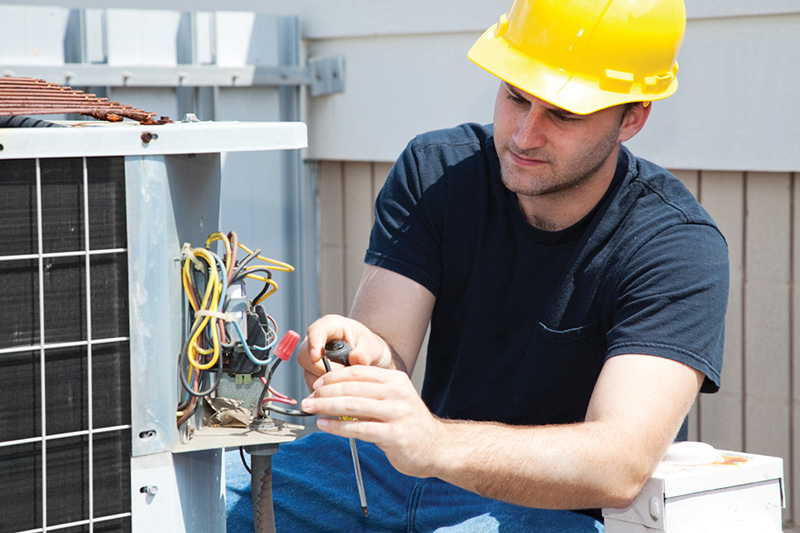Modifications in routine maintenance likely mean more service calls.
By John Haley
As a national HVAC provider we are constantly working with our clients to help them take a look at their entire portfolio and develop plans and programs to help reduce the annual operating expenses. Our clients can manage their HVAC equipment in one of two ways: proactive and reactive. A proactive approach focuses on maintaining the equipment on a routine basis with the hopes of reducing the number of reactive calls during the year. The reactive approach focuses on handling equipment issues as they happen. The biggest difference in these two types of programs is that a proactive approach relies on setting up a program that requires a “fixed” type of expense schedule while a reactive approach handles the reactive calls as they come in.
We have clients that use both of these strategies based on their overall business philosophy. Overall, a proactive approach will be the most economical solution in a program that spans 2 years or more. This option is usually viewed as a conservative approach that is allowing the majority of the expenses to be calculated up front. Although a business that utilizes a reactive program may experience a low number of reactive calls in one season, chances are the following season will result in the complete opposite.
 Even though a proactive plan spreads out the expenses over the contract period, clients will still look for ways to reduce the operating spend. Maintenance programs can be modified to reduce expenses but the question is “What impact will it have on the total program?” Will it cost less overall or will it result in a higher number of equipment issues? Pulling service tasks out of the maintenance schedule is one way to reduce the annual maintenance cost. Reducing the frequency from quarterly to bi-annually is one way to substantially cut the maintenance budget. Sounds simple, but it could be costly. Another way to cut the expense is to change filters less.
Even though a proactive plan spreads out the expenses over the contract period, clients will still look for ways to reduce the operating spend. Maintenance programs can be modified to reduce expenses but the question is “What impact will it have on the total program?” Will it cost less overall or will it result in a higher number of equipment issues? Pulling service tasks out of the maintenance schedule is one way to reduce the annual maintenance cost. Reducing the frequency from quarterly to bi-annually is one way to substantially cut the maintenance budget. Sounds simple, but it could be costly. Another way to cut the expense is to change filters less.
One of our clients — a large big-box retailer — approached us and asked us to modify our current maintenance program in order to help reduce the maintenance spend. They wanted to keep the quarterly inspections but wanted to remove two of the filter changes during the year in order to meet their budget. Obviously we recommended against the change but ultimately it was what the client wanted. We did recommend that we walk before we run to completely understand the issues that could occur from such a severe change. After a number of conversations our client agreed and half of the locations we serviced were changed to a bi-annual filter change for two seasons in order to evaluate the expenses. Over the course of the next 24 months we were able to monitor the two programs and the results are as follows:
• The program consisted of 460 locations with a total of 1,247 RTUs. The locations were broken down into two groups of 230 locations.
– Group A continued with the quarterly inspections with quarterly filter changes (620 RTUs).
–Group B with quarterly inspections with bi-annual filter changes (627 RTUs).
• The entire portfolio was monitored over 24 months to identify issues caused by a lack of filter changes. Both groups experienced issues but the difference in quantity was very telling.
– Group A had 37 units experience issues (6% of Group A).
– Group B had 168 units experience issues (26% of Group B).
• The majority of the repairs were iced-up coils caused by a lack of airflow across the coils. Repairs on these units ranged from changing filters and thawing out the coils to replacement of blower and belts.
The results found in this program were very eye-opening for the client. The expense associated with the additional reactive calls resulting from a change in the frequency of the filter changes far exceeded the savings in the modification of the program. As a result, the client decided to move back to the original program.
In summary, modifications in any type of routine maintenance program will have a direct correlation in the number of service calls. Routine maintenance completed in a timely fashion will result in few reactive calls. Fewer reactive calls means fewer times your facility is either too hot or too cold and when a customer walks into an uncomfortable store there is a chance their buying cycle will change. This is an expense that hurts the most!
— John Haley is the director of HVAC services for Ferrandino & Son. Haley may be reached at [email protected].
